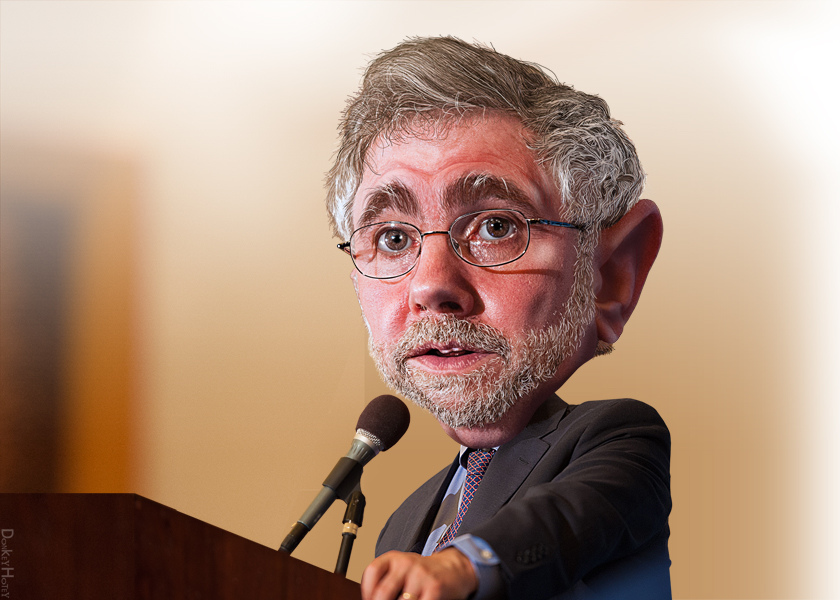The Most Divisive Election in American History

The republic had not seen a more divisive presidential election in its history.
On one side, you had the establishment candidate.
Funded by a cabal of deep-pocketed elites, he represented entrenched political interests and the continuation of the status quo.
He was a familiar, vetted and reliable ally. He would ensure that the increasingly corrupt and crony-driven political machine would continue to roll on.
On the other side stood the populists.
They lived far from the power centers of New York and Washington, D.C.
These unsophisticated rabble-rousers felt disenfranchised, exploited and ignored.
For them, the rapid technological change of recent decades was both dizzying and confusing.
An unwelcome immigrant influx threatened their values, their way of life and their very livelihoods.
Their disenfranchisement with the coastal elites had led some of them to flirt with the promise of a more egalitarian, positively un-American promise of socialism.
These ordinary Americans found their representative in the unlikeliest of candidates – a quintessential anti-politician who attracted massive, passionate crowds.
This candidate inspired the frustrated masses. His rhetoric was unconventional and iconoclastic. If elected, he promised anti-establishment economic policies to upend the dominance of traditional political elites.
This election was the last chance for the common man.
Its outcome would determine the direction of the United States for decades to come.
I am, of course, describing the election of 1896.
The establishment candidate was William McKinley, hand-picked by Andrew Carnegie, John D. Rockefeller and J.P. Morgan.
And the populist firebrand was William Jennings Bryan.
In a rhetorical tour de force, Bryan delivered the most famous speech in American political history at the 1896 Democratic National Convention in Chicago, concluding with the words “You shall not crucify mankind upon a cross of gold.”
History Rhymes
I recently spent time studying the Gilded Age and Progressive Era in U.S. history – roughly 1865 to 1920.
The parallels between the social and political climate of that period and today are remarkable.
In 1865, the nation was emerging from a divisive and deadly Civil War.
But by 1920, the United States had transformed into the largest and most powerful economy in the world.
Think of the U.S. as the China of its day.
Railroads shifted perceptions of distance forever. Electric lights first lit the city of Wabash, Indiana, and J.P. Morgan’s mansion in New York City. The Wright Brothers took to the sky. Henry Ford took Americans to the road.
Horatio Alger Jr. inspired thousands to rise – if not to “riches,” then at least to “respectability.”
The Gilded Age was the era of the giants of American business – railroads (Vanderbilt), steel (Carnegie), oil (Rockefeller), banking (J.P. Morgan) and electricity (Edison).
Universities named after Johns Hopkins, Leland Stanford, Ezra Cornell and Cornelius Vanderbilt still stand today as memorials to their Gilded Age founders.
But the relentless pace of transformation also had society bursting at its seams.
Rapid economic development led to an explosion in economic inequality.
From 1860 to 1900, the wealthiest 2% of American households owned more than a third of the nation’s wealth. The top 10% owned roughly three-fourths.
The Haymarket riot in 1886 and the Homestead Strike of 1892 signaled a time of massive labor strife.
Large-scale immigration also inspired fear and loathing among Americans.
Swarthy Italians and Eastern Europeans working in Carnegie’s steel mills threatened to dilute American blood and culture.
A Chicago minister penned and popularized the “Pledge of Allegiance” in 1892 to ensure the loyalty and patriotism of a new generation of American immigrant youths.
I still had to recite it in my Pittsburgh grade school every morning more than 80 years later.
Nevertheless, the working man’s discontent led to the rise of labor unions. Some workers even flirted with the promises of Russian-style socialism.
1919 marked the height of the Spanish flu, which claimed more victims than the Civil War. That same year the U.S. saw more than 3,600 labor strikes. Anarchist plots targeted U.S. senators and the attorney general.
On May 1, 1919, Federal authorities mobilized to suppress the outbreak of a socialist revolution similar to the ones seen in Russia and Hungary.
The parallels are clear.
Today’s world is also rocked by technological upheaval.
These changes are disrupting previous ways of life and displacing an entire generation of workers.
Today, the top 1% of Americans earn nearly a quarter of the country’s income and control an astonishing 40% of its wealth.
Bill Gates, Warren Buffett and Jeff Bezos are the Vanderbilts, Carnegies and Rockefellers of their day.
At the same time, traditional ethnic groups are marginalized by a new demographic tidal wave of immigration. Meanwhile, previously silent minorities are noisily asserting their rights.
But It Does Not Repeat…
Yes, there are parallels with the election of 1896. But one thing looks different 120 years later.
Today, coastal elites at the leading media outlets, universities and technology companies dictate an onslaught of progressive values.
As former New York Mayor Michael Bloomberg pointed out to a squirming audience of academics in his 2013 commencement speech at Harvard University:
In the 2012 presidential race, according to Federal Election Commission data, 96% of all campaign contributions from Ivy League faculty and employees went to Barack Obama. Ninety-six percent. There was more disagreement among the old Soviet Politburo than there is among Ivy League donors. That statistic should give us pause – and I say that as someone who endorsed President Obama for reelection – because let me tell you, neither party has a monopoly on truth or God on its side.
No doubt, a survey of leading mainstream media outlets and Silicon Valley-based tech giants would show a similar trend.
The Lessons of the 1896 Election
The populist, Bryan, ultimately lost the election of 1896 to the establishment candidate, McKinley, by 51.03% to 46.70%.
Bryan also failed against McKinley in a rematch in 1900. Bryan’s personality-driven populist movement petered out.
In contrast, in 2016, the populist candidate, Donald Trump – call him the Bryan of his day – prevailed over the establishment candidate, Hillary Clinton.
How the political winds will shift in the 2020 presidential election is unclear.
By the late evening of November 3, we will hopefully know the outcome of this year’s presidential election.
No matter what it is, as the election of 1896 reminds us, the current political, social and cultural upheaval in the United States has seen parallels in the past.
That’s the nature of democracy. It is often rough and tumble, contentious and noisy. And it’s not always inspiring.
But in the end, the United States will survive and prosper.
The republic will survive.
Good investing,
Nicholas






